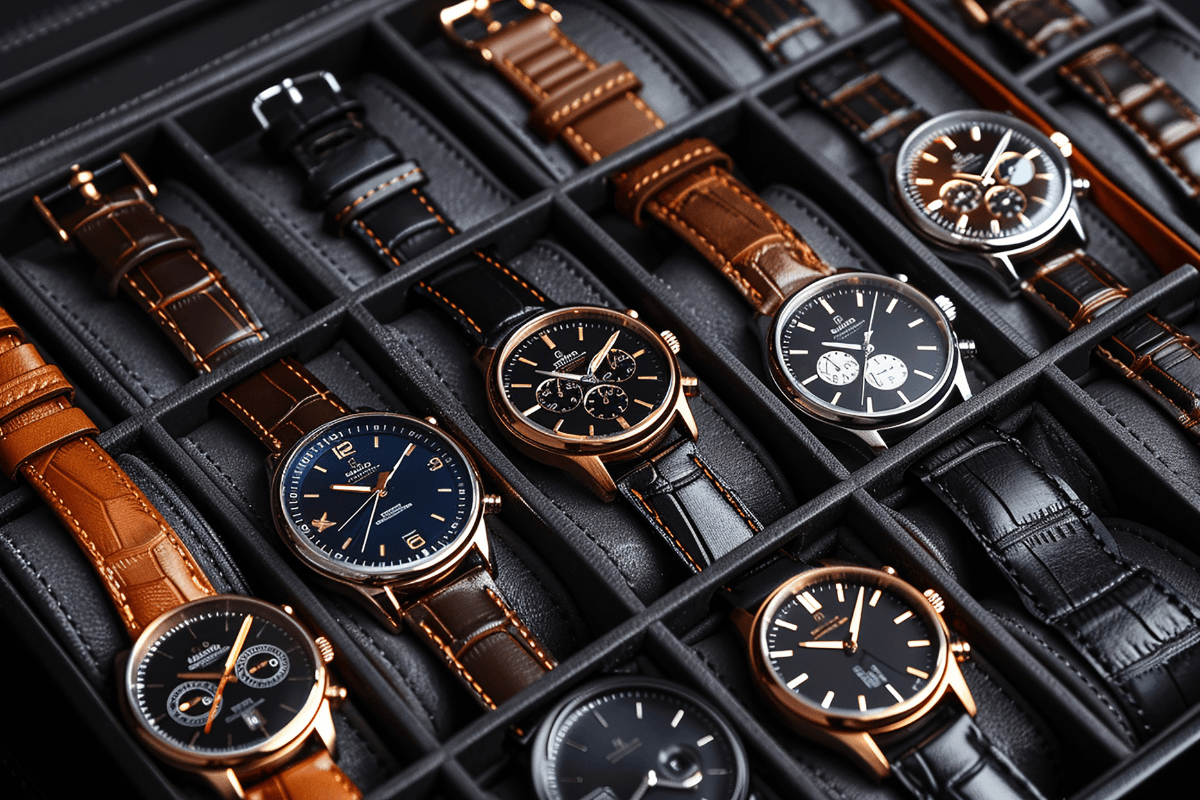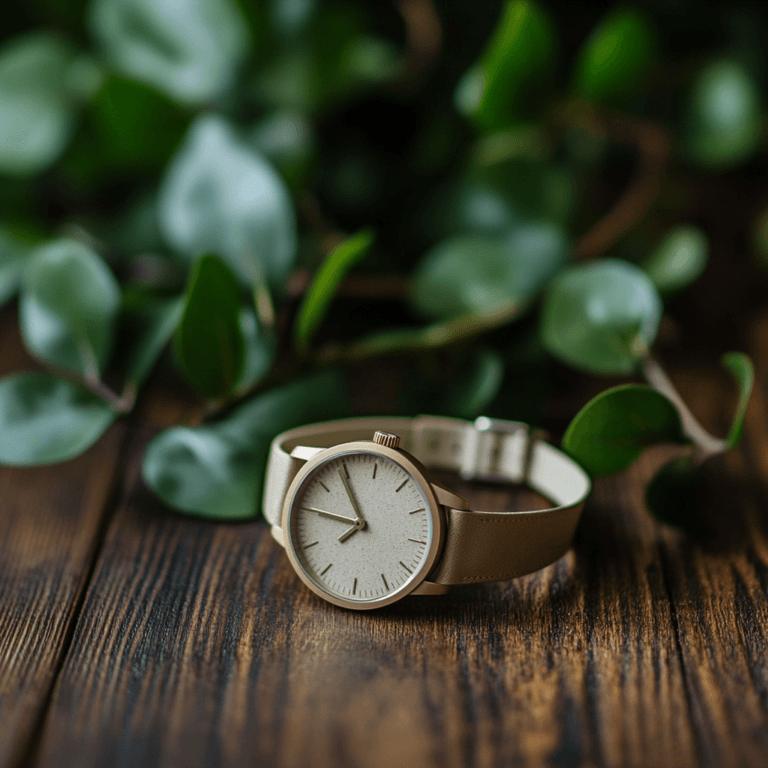
Throughout history, watches have symbolized far more than just timekeeping. For women, timepieces represent independence, progress, and empowerment. From the early days of decorative wristwatches to the modern era of smartwatches, these accessories have mirrored women’s evolving roles in society. In this article, we’ll explore women’s empowerment through watches, tracing the journey of historical watches for women and their impact on fashion, functionality, and freedom.
1. The Origins of Women’s Watches
The First Wristwatches for Women
Did you know that wristwatches were initially designed for women? The first wristwatch is believed to have been made by Abraham-Louis Breguet in 1810 for the Queen of Naples. These early designs were highly decorative, emphasizing elegance and status.
- Elegant Jewelry: Early watches were adorned with jewels and precious metals.
- Symbol of Wealth: Worn by aristocrats, these watches were status symbols.

From Fashion to Function
By the late 19th century, women’s watches shifted from decorative items to more practical tools. As women’s societal roles expanded, their watches became sleeker and more functional.
- Practical Designs: Women needed reliable timepieces for work and daily activities.
- Balance of Style and Function: Watches started blending elegance with practicality.

2. Watches as Tools of Independence
Suffragette Movement and Timepieces
During the early 20th century, watches became essential for suffragettes fighting for women’s rights. As they juggled work, activism, and family life, watches symbolized their growing independence.
- Managing Time: Reliable watches helped women manage their busy schedules.
- Movement Colors: Some suffragettes wore watches in their movement’s signature colors—purple, white, and green.

World War I and Women’s Watches
World War I transformed society, pushing women into the workforce. As their roles evolved, so did their need for durable, functional watches.
- Shift to Practicality: Women’s watches became more robust as they took on new responsibilities in factories and offices.
- Changing Fashion: Practical clothing and accessories, including wristwatches, became the norm for working women.

3. Women’s Watches in the 20th Century
The Roaring Twenties
The 1920s saw women embracing new freedoms, and watches became a key accessory for the modern woman.
- Art Deco Influence: Art Deco designs featured geometric shapes, bold lines, and luxurious materials.
- Fashion Statements: Watches became a stylish accessory, reflecting women’s growing social freedoms.

Post-War Era: Luxury and Elegance
After World War II, economic growth brought a boom in luxury watches. Brands like Rolex, Cartier, and Omega crafted high-end watches that symbolized success and empowerment.
- Luxury and Style: Women’s watches were now elegant symbols of affluence and independence.
- Empowerment Through Fashion: Owning a luxury watch represented economic power and personal achievement.

4. Watches for Professional Women
The Rise of the Working Woman
As women’s roles in the workplace expanded in the 1950s and beyond, watches became essential tools for time management.
- Business-Ready: Professional women wore minimalist, elegant watches suited for the office.
- Managing Time: Watches represented efficiency, helping women juggle work, family, and personal time.

Iconic Professional Watches
After World War II, economic growth brought a boom in luxury watches. Brands like Rolex, Cartier, and Omega crafted high-end watches that symbolized success and empowerment.
- Rolex Lady-Datejust: Known for its precision and elegance, a favorite among professional women.
- Cartier Panthère: Celebrated for its timeless design, worn by influential women in business and society.
5. The Feminist Movement and Watches
Breaking Gender Norms
The feminist movement of the 1960s and 70s brought bold changes to women’s fashion, including watches. Women embraced unisex designs that defied traditional gender norms.
- Bold and Unisex: Women began wearing watches with larger faces and more masculine designs.
- Statement Pieces: Watches became symbols of rejecting outdated gender roles.

Feminist Icons and Their Watches
Certain timepieces became associated with the feminist movement, representing women’s fight for equality.
- Swatch Watches: Bright, bold designs reflected the energy of the 1980s feminist wave.
- Timex Boyfriend Watch: A larger, unisex watch popularized by women embracing feminist ideals.

6. Modern Women and Smartwatches
The Empowerment of Smartwatches
Today, smartwatches provide women with more than just the time. These multifunctional devices empower women by offering tools for health monitoring, fitness tracking, and time management.
- Health and Fitness: Smartwatches track steps, heart rate, and stress levels, helping women prioritize wellness.
- Balancing Work and Life: Features like calendar reminders and notifications assist women in managing busy schedules.

Fashion Meets Technology
Smartwatches now blend fashion with cutting-edge technology, allowing women to express their personal style while staying connected.
- Customizable Designs: Smartwatches from brands like Apple and Fitbit offer interchangeable bands and customizable watch faces.
- Tradition Meets Innovation: Some smartwatches mimic the look of traditional watches while offering modern digital features.
7. Iconic Women and Their Watches
Historical Icons
Throughout history, influential women have worn iconic watches that symbolize their power and status.
- Jackie Kennedy’s Cartier Tank: A timeless piece representing her grace and elegance.
- Princess Diana’s Patek Philippe: A watch that reflected her royal sophistication.

Modern Power Figures
Today’s influential women continue to wear watches that reflect their leadership and style.
- Michelle Obama’s Cartier: A symbol of strength and influence.
- Oprah Winfrey’s Rolex: Representing success and achievement in the entertainment world.
8. Future Trends in Women’s Watches
Sustainable and Custom Designs
As society moves toward sustainability, women’s watch designs are following suit, with a focus on eco-friendly materials and personalized options.
- Sustainability: Watches made from recycled materials and vegan leather are gaining popularity.
- Customization: Women now have the option to personalize everything from the band to the engravings on their watches.

Continued Empowerment Through Technology
Smartwatches will continue to play a vital role in women’s lives, offering tools for health, productivity, and personal achievement.
- Advanced Features: Future smartwatches will offer even more advanced tracking and health features, empowering women to stay on top of their well-being.
Conclusion
From the earliest historical watches for women to the latest smartwatches, timepieces have symbolized women’s empowerment, independence, and progress. Whether through luxury designs that mark personal achievements or modern smartwatches that help balance life’s demands, watches will continue to evolve with women’s roles in society.
Post Comment